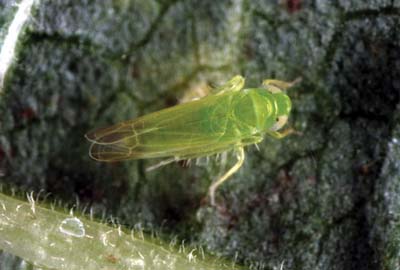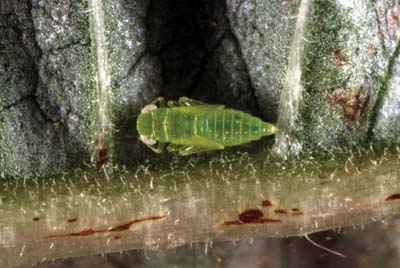To save the Web-optimized images shown below to your hard drive:
|
Click to access Display and Print quality images. |
|
Click to access Display and Print quality images. |
Copyright © 2005 University of Florida
Potato leafhopper feeds on over 200 wild and cultivated plants, including vegetable and field crops, ornamentals, and fruit and shade trees, though legumes are preferred. Feeding results in curling, stunting, and yellowing of foliage. The damage sometimes is called “hopperburn” because the plant appears to be singed by fire. Application of insecticides to foliage will prevent injury.
Images
To save the Web-optimized images shown below to your hard drive:

Potato leafhopper, Empoasca fabae, adult on snap bean.
(Photographer: L. Buss, University of Florida)
Click to access Display and Print quality images.

Potato leafhopper, Empoasca fabae, nymph on snap bean.
(Photographer: L. Buss, University of Florida)
Click to access Display and Print quality images.
Copyright © 2005 University of Florida